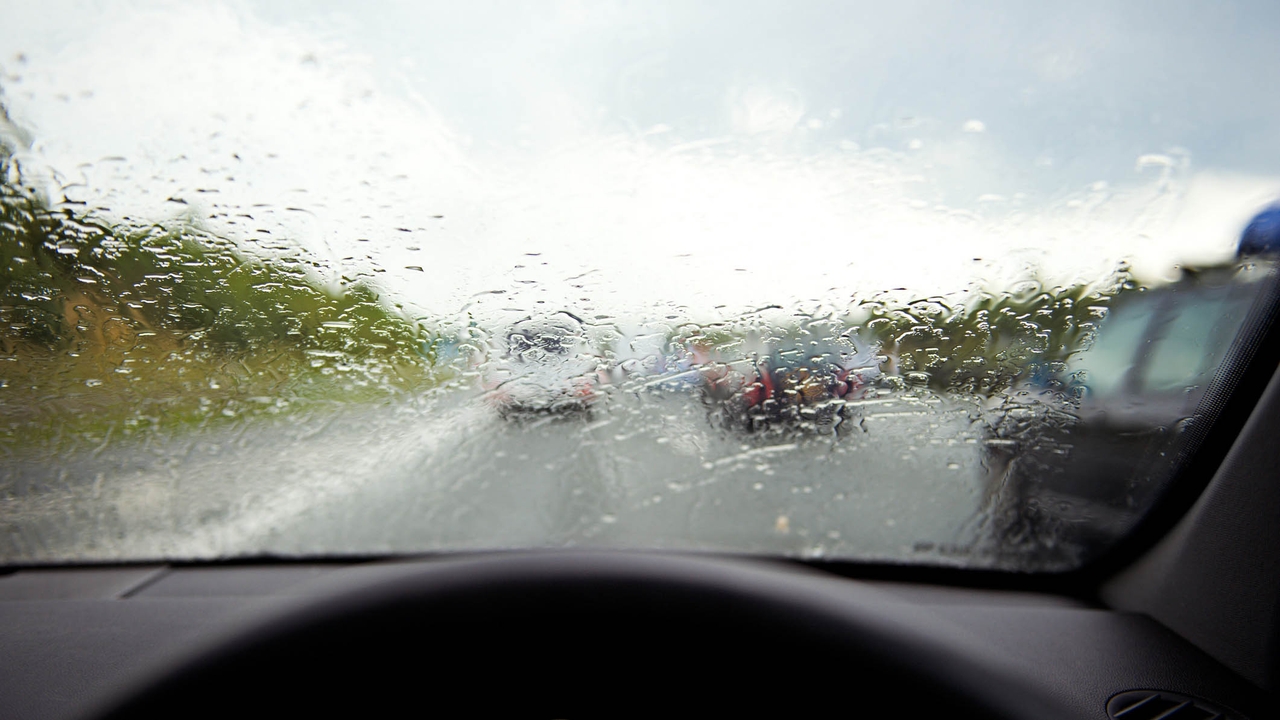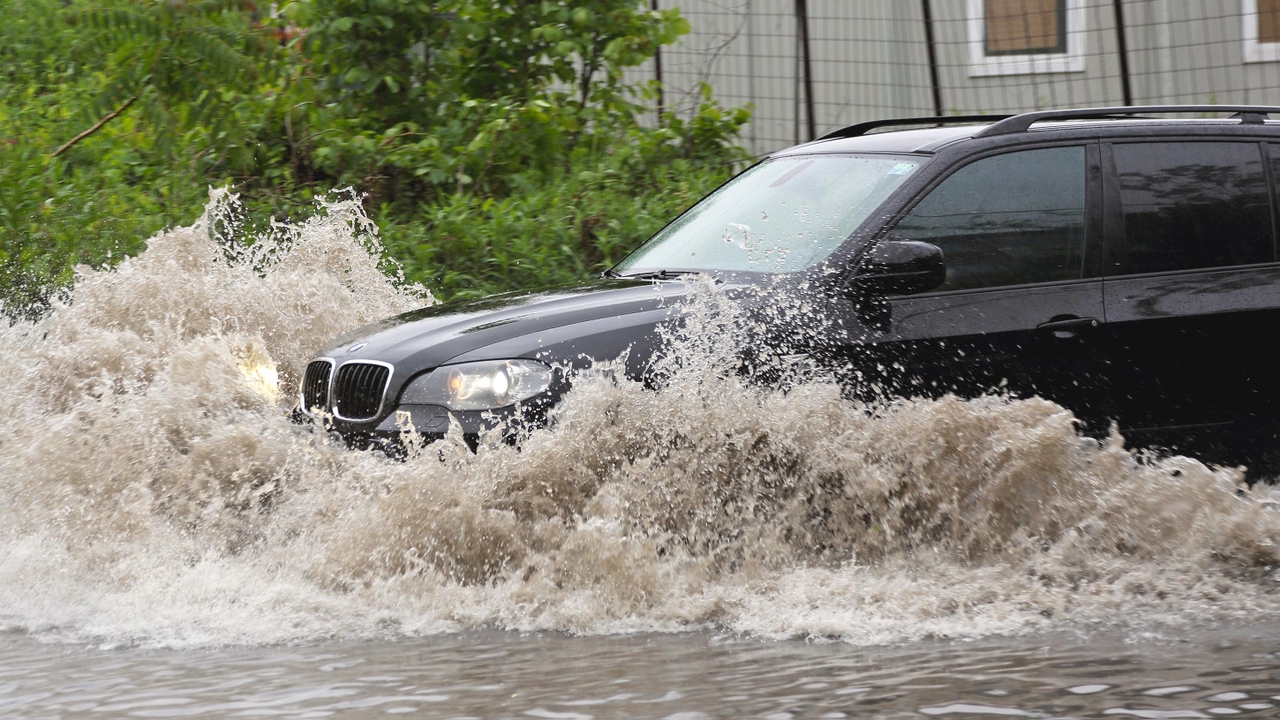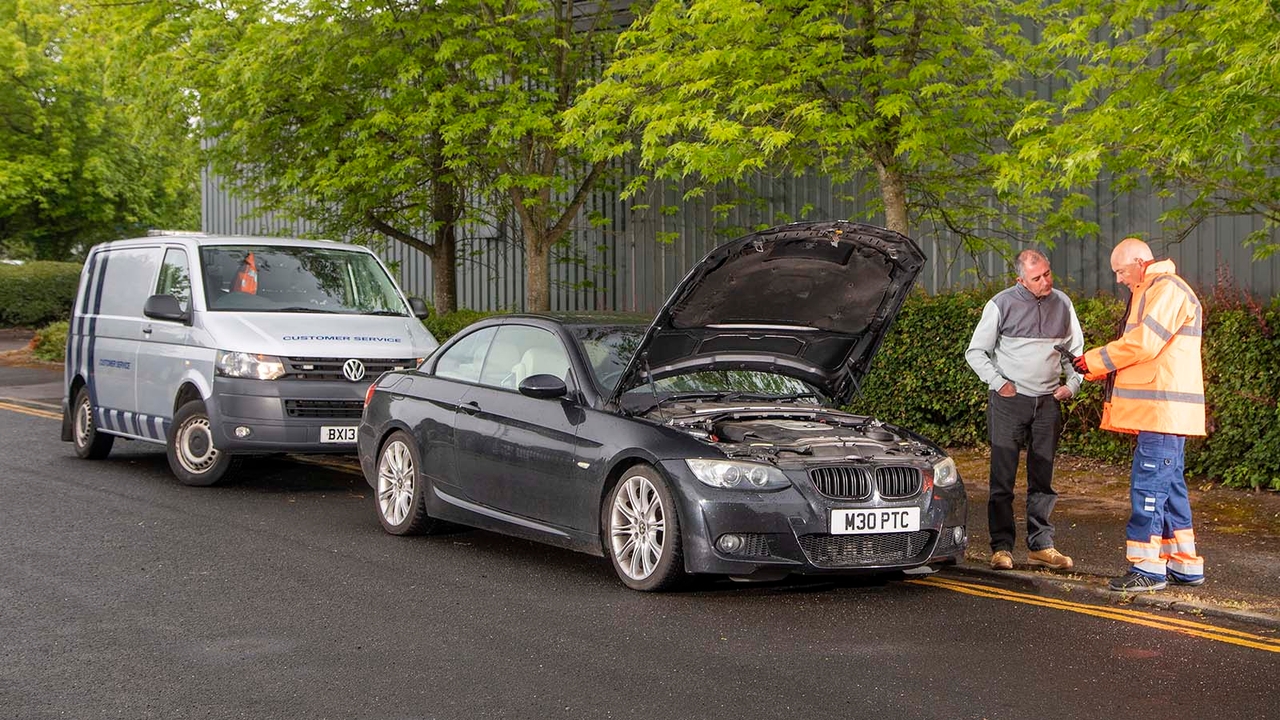It seems we get more than our fair share of rain and flooding in the UK.
Whether it’s just daily drizzle or yet another named storm, British motorists need to be capable and confident of driving in wet weather. Driving when it's raining or the roads are wet can be treacherous, especially in sudden heavy rain and when floods happen.
Whether you’re after a guide for driving in rain for beginners or you just want to feel a little more confident when the heavens open, our guide contains tips for those times when it feels like you need an ark rather than a car.
How to prepare for driving in heavy rain
- Ask yourself if the journey can wait until it’s not raining so heavily
- Make sure your wipers are in good condition – do they clear the screen effectively and without delay?
- Check your tyres’ condition, pressure and tread depth. Tyres have a wet grip rating from A to G, where A is best. When buying tyres, choose the tyres with the best wet grip that you can afford
- Make sure your lights are working
- Carry a waterproof coat and warm clothes in the car
- Make sure your phone has enough battery in case you have to call for help
- Let a friend or family member know when and where you’re driving
- Have a good amount of fuel in your tank (or charge in your battery in an electric car)
- Keep up to date with flooding or road closure information. Check regional news bulletins or local Facebook groups
- Give yourself extra time to get to your destination, in case of delays or diversions
How to drive in heavy rain

“It’s good for the garden”, someone will say when it’s hammering down. It’s less good to drive in, though, and driving in heavy rain takes some adjustments on your part. You should slow down, and increase the distance between you and the car in front. There are several reasons for this – your stopping distance increases in wet weather (more on that below), and you’ll give yourself more time to react to the road ahead and spot large puddles.
If your wipers are on continuously, you should have your headlights on. That might mean turning auto lights off and manually putting your headlights on. Don’t turn on your fog lights unless forward visibility drops to less than 100 metres.
Keep your air conditioning on in rainy weather, and make sure you know how to use the car’s settings to prevent your windscreen and windows from steaming up. Read more in our guide to demisting your windscreen quickly and safely.
Make sure your wipers are going at the right speed to clear the water. Remember to turn the intensity down once the rain gets lighter to prevent your wipers wearing out prematurely.
When driving on a motorway in heavy rain, you might find that you’re driving through a lot of spray from other vehicles. This is another reason why you should leave a larger gap between you and the car in front in wet weather – spray can impact your vision and visibility.
What’s the safest speed for driving in rain? How slow should you go?

In some European countries the motorways will have different speed limits for dry and wet weather. In the UK, there’s no set speed that you should stick to when it’s raining, but you should go slower than you would in dry conditions. The road can be slippery with even a little bit of water and, in heavy rain, your tyres might not be able to fully clear the water. At high speeds, you’re at higher risk of aquaplaning – a dangerous situation where your tyres lose grip and you lose control of the vehicle.
Stopping distances in rain
On a dry, smooth road, the stopping distance at 30mph is 23 metres. Official guidance says that a car’s stopping distance might be twice as much in the wet as in the dry, so we’ve done the maths and doubled it for you. Of course, every car is different, but you can use this table as a guide to how far your car might take to stop in heavy rain.
| Speed | Stopping distance in rain | How many Ford Fiesta lengths is that? |
| 20mph | 24 metres | 6 |
| 30mph | 46 metres | 12 |
| 40mph | 72 metres | 18 |
| 50mph | 106 metres | 26 |
| 60mph | 146 metres | 36 |
| 70mph | 192 metres | 48 |
What should I do if my car breaks down in heavy rain?
As tempting as it might be to stay in the car if you’re stranded by the side of the road in the rain, you’re safer if you get out and stand away from the car. That’s why it’s important to carry warm and waterproof clothing for you and all your passengers.
If you’ve got kids, always keep a spare coat for them in the car. Hopefully you have family or friends you can call upon to come and look after the kids while you wait for recovery.
Putting the bonnet up is the universal ‘I’ve broken down’ signal, but keep your bonnet closed if you break down in heavy rain – you don’t want the rainwater getting to your engine’s delicate electrical components.
Can I drive through flood water?

Without wanting to sound facetious, that depends on how much water is on the road and the layout of the road. If you know that the flood water is relatively shallow and that the flooding is only on a short stretch of the road, then most cars will tackle this with ease. We would recommend turning around and finding another route if the water is deep or if the road is flooded for a long way.
Never drive through flood water if you don’t know how deep it is. You won’t be able to tell how high the water level is relative to your engine, and there may be submerged debris that could cause damage to your car.
It’s possible that your car might start floating in just 30cm (one foot) of water.
Once you have driven through a section of flood water or a large puddle, make sure to press the brake pedal to dry your brakes off.
Read more about the consequences of flood damage to a car here.
How to drive through flood water

The advice for driving through flood water is the opposite to driving on ice. You should keep in a low gear with medium-to-high revs to reduce the risk of your engine cutting out, and maintain smooth progress at a set speed. Don’t get too close to the vehicle in front, as you really don’t want to come to a stop on a flooded road. Stop and water will get into your engine, causing all sorts of problems.
If there’s a vehicle coming towards you, wait until they’ve passed. A vehicle driving through flood water creates a bow wave, which could go straight into your engine.
What should I do if my car is flooded?

As soon as it's safe – pull over, stop the engine if it's still running, and don’t attempt to restart the car. You’ll need a wet and dry vacuum cleaner to suck up any standing water, and towels to absorb as much water as possible from the upholstery – but note that your insurer may stipulate that the drying out process is done by a professional. Have your car towed to a garage where it can be inspected by a mechanic.
If you have comprehensive insurance cover, you should call your insurance company to make a claim, but be aware that they may choose not to pay out. There are two types of flood damage – unavoidable (such as your car being flooded while it’s parked) and avoidable (where you’ve driven through flood water and damaged the car). If you’ve driven at speed into a really deep area of flood water, you’ll probably be out of pocket.
Your insurance company will assess the car to see if the damage is repairable or whether it’s a write-off.



































